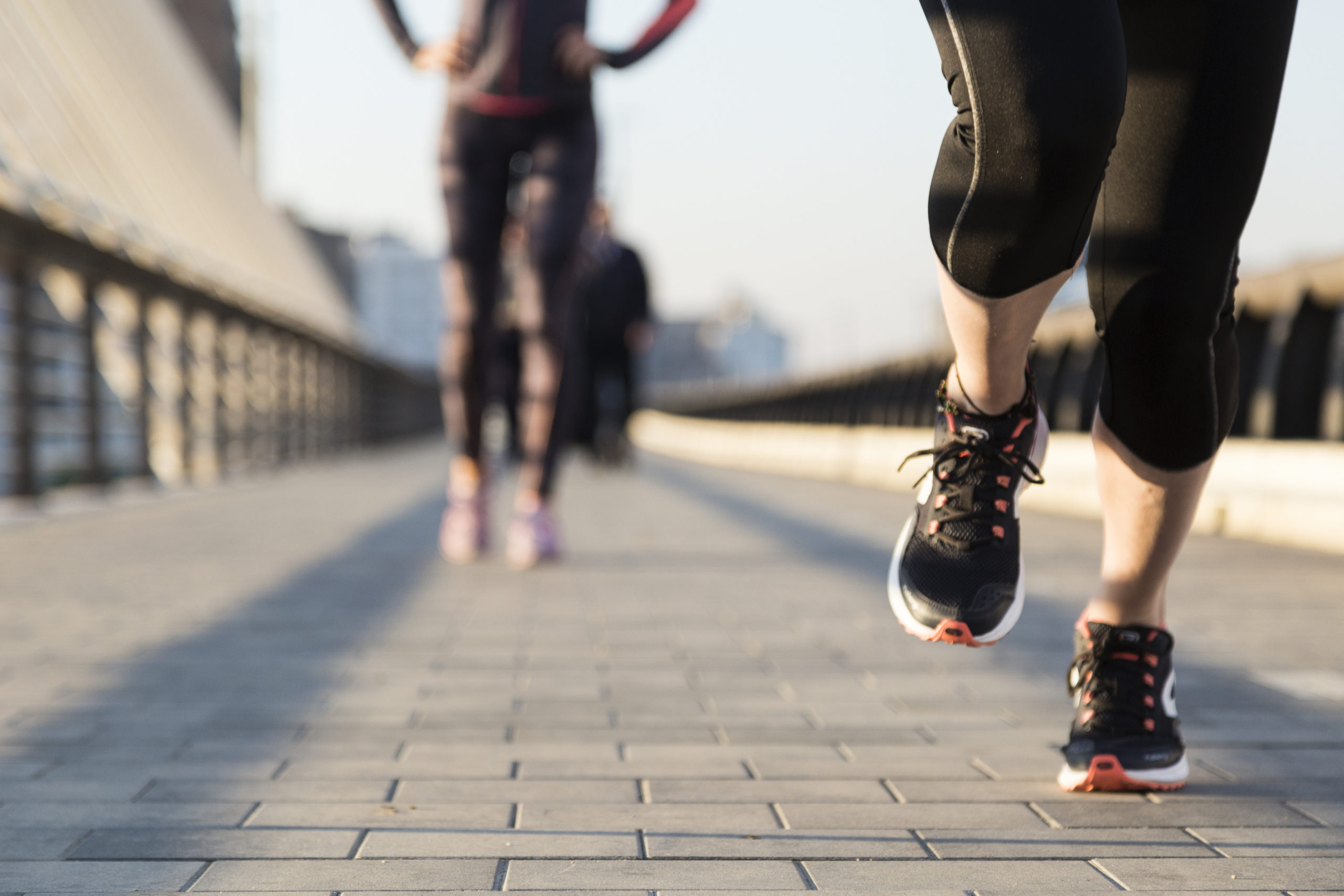

Featured
Why Does My Nose Run When I Workout
Published: August 12, 2023
Find out why your nose runs when you workout in this featured article. Discover the causes and how to prevent it for a comfortable workout experience.
Introduction
Have you ever noticed that your nose starts to run uncontrollably when you exercise? It might seem strange, but it’s actually a common phenomenon that many people experience. Whether you’re jogging, lifting weights, or doing yoga, the sudden onset of a runny nose can be quite annoying. But why does this happen?
Well, the answer lies in the complex workings of our body’s physiology and the interaction between our respiratory and autonomic nervous systems. When we exercise, our body undergoes various changes to meet the increased demand for oxygen and energy. These changes can impact our nasal passages, leading to the onset of a runny nose.
In this article, we will explore the scientific explanation behind why our noses run when we work out. We will delve into the role of the autonomic nervous system in regulating our bodily functions and how exercise affects the nasal passages. Understanding the underlying mechanisms will help shed light on this peculiar phenomenon and provide insights into preventive measures.
So, if you’ve ever wondered why your nose becomes a faucet during your workout sessions, read on to discover the fascinating science behind it.
Explanation of the phenomenon
The phenomenon of a runny nose during exercise can be attributed to several factors. One of the main reasons is the increased blood flow to the nasal passages. When we exercise, our heart rate and blood flow increase to deliver oxygen and nutrients to the working muscles. This increased blood flow also affects the blood vessels in our nasal passages, causing them to dilate. As a result, the blood vessels become more permeable, leading to nasal congestion and excessive mucus production.
Another contributing factor is the changes in temperature and humidity that occur during exercise. When we engage in physical activity, our body temperature rises, and we start to sweat to cool down. This increase in body heat can cause the blood vessels in our nose to expand further, leading to a runny nose. Additionally, as we breathe in more air during exercise, the dryness of the inhaled air can irritate the nasal passages, triggering a release of mucus to protect and moisturize them.
Furthermore, the role of histamine, a chemical involved in allergic reactions, cannot be overlooked. During exercise, histamine levels in the body can increase, especially in individuals who are prone to allergies. Histamine is known to cause the dilation of blood vessels and the release of mucus. Therefore, if you have allergies, the combination of exercise-induced histamine release and increased blood flow can exacerbate your symptoms, leading to a runny nose.
In summary, the phenomenon of a runny nose during exercise can be attributed to increased blood flow to the nasal passages, changes in temperature and humidity, as well as the release of histamine. Now that we understand the scientific explanation behind this phenomenon, let’s delve deeper into how exercise affects the nasal passages in the next section.
Scientific explanation
To understand why our noses run when we exercise, we need to explore the role of the autonomic nervous system (ANS) and its interaction with our respiratory system. The ANS is responsible for regulating various involuntary bodily functions, including our breathing and the dilation of blood vessels.
During exercise, the sympathetic branch of the ANS becomes more active. This branch is responsible for the “fight or flight” response, which prepares our bodies for increased physical activity. As a result, the sympathetic nervous system activates the release of norepinephrine, a hormone that causes vasoconstriction, or the narrowing of blood vessels, in most parts of the body. However, in the nasal passages, the sympathetic nerves release a different neurotransmitter called acetylcholine, which leads to vasodilation, or the widening of blood vessels.
This vasodilation in the nasal passages allows for increased blood flow, supplying more oxygen and nutrients to the tissues. However, it also causes an increase in the leakage of fluid from the blood vessels into the surrounding tissues, resulting in nasal congestion and the production of excess mucus. The excess mucus is the body’s way of protecting and lubricating the nasal passages during the increased airflow and temperature changes associated with exercise.
Furthermore, the increased blood flow and congestion can also stimulate the production of nasal secretions by the mucous glands. These secretions, made up of water, mucus, and various proteins, help to humidify the inspired air, trap foreign particles, and provide a moist environment for the delicate tissues of the nasal passages.
Overall, the scientific explanation for why our noses run during exercise lies in the increased activity of the sympathetic branch of the autonomic nervous system, leading to vasodilation and increased blood flow to the nasal passages. This process results in nasal congestion and the production of excess mucus to protect and moisturize the nasal tissues.
Role of the autonomic nervous system
The autonomic nervous system (ANS) plays a crucial role in regulating various involuntary bodily functions, including our breathing and the dilation of blood vessels. It consists of two main branches: the sympathetic and parasympathetic nervous systems.
During exercise, the sympathetic branch of the ANS becomes more active, preparing our bodies for increased physical activity. This branch is responsible for the “fight or flight” response, which mobilizes energy resources and increases cardiovascular function. The sympathetic nervous system activates the release of norepinephrine, a hormone that acts on various organs and tissues throughout the body to increase their activity.
Specifically, in the nasal passages, the sympathetic nerves release a neurotransmitter called acetylcholine, which leads to vasodilation, or the widening of blood vessels. This vasodilation allows for increased blood flow to the nasal tissues, supplying more oxygen and nutrients needed during exercise.
However, it’s important to note that the autonomic nervous system’s response differs in various parts of the body. In most regions, the sympathetic nervous system causes vasoconstriction, or the narrowing of blood vessels, to redirect blood flow to critical areas like the heart and skeletal muscles. But in the nasal passages, a relatively unique response occurs, thanks to the release of acetylcholine instead of norepinephrine.
This localized vasodilation in the nasal passages enables increased blood flow, but it also leads to increased leakage of fluid from the blood vessels into the surrounding tissues. This leakage results in nasal congestion and the production of excess mucus. The excess mucus serves as a protective mechanism to humidify and lubricate the nasal passages, especially during the increased airflow and temperature changes associated with exercise.
The parasympathetic branch of the ANS also contributes to the regulation of nasal function. It acts as the counterpart to the sympathetic system, promoting relaxation, digestion, and the conservation of energy. Although less active during exercise, the parasympathetic nerves play a role in the control of nasal secretions by stimulating the mucous glands to produce mucus.
Overall, the autonomic nervous system, specifically the sympathetic and parasympathetic branches, plays a crucial role in regulating the vascular and secretory responses of the nasal passages during exercise. The intricate balance between these two branches ensures that the nasal tissues receive adequate blood flow and are protected by the production of mucus.
Effects of exercise on the nasal passages
Exercise can have several effects on the nasal passages, ranging from increased blood flow and congestion to changes in temperature and humidity. These effects are a result of the complex interactions between the respiratory system, autonomic nervous system, and various physiological responses that occur during physical activity.
One of the primary effects of exercise on the nasal passages is the increased blood flow and congestion. As we engage in physical activity, our heart rate and blood flow increase to meet the higher demand for oxygen and nutrients. This increased blood flow also affects the blood vessels in the nasal tissues, causing them to dilate and become more permeable. Consequently, nasal congestion occurs, leading to a runny nose and a feeling of stuffiness.
In addition to increased blood flow, exercise can also lead to changes in temperature and humidity. As our body temperature rises during physical activity, we begin to sweat to cool down. This increase in body heat can cause the blood vessels in the nasal passages to dilate further, resulting in nasal congestion. Moreover, as we inhale more air during exercise, the dryness of the inhaled air can irritate the nasal passages and trigger the production of mucus to provide moisture and protection.
Furthermore, exercise-induced histamine release can contribute to the effects on the nasal passages, especially for individuals prone to allergies. Histamine, a chemical involved in allergic reactions, can cause the dilation of blood vessels and the release of mucus. Therefore, if you have allergies, the combination of exercise-induced histamine release and increased blood flow can aggravate your symptoms and result in a runny nose.
Overall, exercise affects the nasal passages by increasing blood flow and congestion, causing changes in temperature and humidity, and potentially triggering histamine release. These effects can lead to nasal congestion, excessive mucus production, and ultimately a runny nose during physical activity.
Increased blood flow and congestion
One of the key effects of exercise on the nasal passages is the increase in blood flow and subsequent nasal congestion. When we engage in physical activity, our heart rate and overall blood flow rise to meet the increased demand for oxygen and nutrients. This increased blood flow also affects the blood vessels in the nasal tissues, causing them to dilate and become more permeable.
The dilation of blood vessels in the nasal passages allows for increased blood flow, delivering more oxygen and nutrients to the tissues. However, this increased blood flow can also result in leakage of fluid from the blood vessels to the surrounding tissues, leading to nasal congestion and swelling. As a result, the nasal passages may feel stuffy, and mucus production may increase.
The nasal congestion and increased mucus production serve as the body’s response to protect the nasal tissues during exercise. The excess mucus helps to moisturize and lubricate the nasal passages, preventing them from becoming overly dry and irritated. Additionally, the increased mucus production can help trap and remove any foreign particles or irritants that may be present in the air we breathe during physical activity.
It’s important to note that the extent of nasal congestion during exercise may vary among individuals. Some people may experience minimal congestion, while others may have more pronounced symptoms. Factors such as overall fitness level, individual physiology, and underlying nasal conditions like allergies can contribute to the severity of nasal congestion during exercise.
To alleviate nasal congestion and make exercise more comfortable, individuals can try various strategies. Breathing through the mouth instead of the nose, using nasal dilators, or taking over-the-counter decongestants can help open up the nasal passages and reduce congestion. However, it’s advisable to consult a healthcare professional before using any medication or nasal products.
Overall, the increased blood flow and subsequent nasal congestion during exercise are a normal physiological response. Understanding this mechanism can help individuals anticipate and manage the nasal symptoms experienced during physical activity.
Temperature and humidity changes
Exercise can lead to significant temperature and humidity changes in the body, which can have an impact on the nasal passages. As we engage in physical activity, our body temperature rises due to increased metabolic activity and the production of heat. This rise in body temperature can cause the blood vessels in the nasal passages to dilate, resulting in nasal congestion.
The dilation of blood vessels in the nasal tissues allows for increased blood flow to deliver oxygen and nutrients needed during exercise. However, this dilation also leads to an increase in the leakage of fluid from the blood vessels into the surrounding tissues, contributing to nasal congestion. The congestion can make it difficult to breathe through the nose and may result in a runny nose.
In addition to temperature changes, exercise can also affect the humidity levels in the nasal passages. As we breathe in more air during physical activity, the inhaled air tends to be drier. This dry air can irritate the nasal passages and trigger the production of mucus as a protective response. The increased mucus helps to humidify and moisturize the nasal passages, preventing them from becoming dry and irritated.
Furthermore, the increase in body temperature and sweating during exercise can also impact the humidity levels within the body. Sweating acts as a natural cooling mechanism, but it can also lead to fluid loss and contribute to overall dehydration. When the body becomes dehydrated, the nasal passages may become drier, making them more susceptible to irritation and inflammation.
To mitigate the effects of temperature and humidity changes during exercise, individuals can take certain precautions. Drinking an adequate amount of water before, during, and after exercise can help maintain hydration levels. This can help prevent excessive dryness in the nasal passages and reduce the risk of nasal irritation.
In addition, using a nasal saline spray or saline rinse before and after exercise can help hydrate the nasal passages and alleviate discomfort. These saline solutions help to lubricate and moisturize the nasal tissues, reducing dryness and irritation caused by increased airflow and temperature changes.
Overall, the temperature and humidity changes that occur during exercise can contribute to nasal congestion and a runny nose. Understanding these factors and taking appropriate measures to maintain hydration and moisture in the nasal passages can help individuals alleviate these symptoms and make exercise more comfortable.
Role of histamine
Histamine, a chemical released by the body during allergic responses, also plays a significant role in the phenomenon of a runny nose during exercise. When we exercise, histamine levels in the body can increase, particularly in individuals who are prone to allergies. This increase in histamine release can contribute to nasal congestion and excess mucus production.
Histamine is stored in specific cells known as mast cells, which are present in the respiratory system, including the nasal passages. When triggered by allergens or certain stimuli, mast cells release histamine into the surrounding tissues. Histamine acts as a potent vasodilator, causing the blood vessels in the nasal passages to widen and resulting in increased blood flow. This increased blood flow can lead to nasal congestion.
In addition to vasodilation, histamine also stimulates the production of mucus. Mucus serves as a protective mechanism for the nasal passages, helping to moisturize and lubricate the tissues. However, an excess of mucus production can occur when histamine levels are elevated. This can result in the sensation of a constantly runny nose during exercise.
Individuals who have allergies, such as hay fever or allergic rhinitis, may experience a more pronounced effect of histamine on the nasal passages during exercise. Allergies can trigger an exaggerated release of histamine in response to specific allergens, leading to heightened nasal congestion, sneezing, and runny nose. When combined with the increased blood flow and congestion caused by exercise, histamine can further exacerbate these symptoms.
Managing histamine-related symptoms during exercise can be challenging, but certain measures can help alleviate the discomfort. Individuals with known allergies can consider taking antihistamines prior to exercise, as recommended by their healthcare professionals. Antihistamines work by blocking the effects of histamine, reducing nasal congestion, and minimizing the production of excess mucus.
Moreover, minimizing exposure to allergens and irritants during exercise can also help reduce the release of histamine and alleviate nasal symptoms. This includes avoiding outdoor activities during peak pollen times or exercising indoors in a controlled environment with filtered air.
Overall, the role of histamine in the context of a runny nose during exercise is significant, particularly for individuals with allergies. Understanding how histamine contributes to nasal congestion and excess mucus production can assist individuals in managing and reducing these symptoms during physical activity.
Preventive measures
Experiencing a runny nose during exercise can be bothersome and impact your overall comfort and performance. Fortunately, there are several preventive measures and strategies that can help minimize the occurrence of this phenomenon. By taking proactive steps, you can make your workout sessions more enjoyable and free from nasal congestion.
One key preventive measure is to ensure proper hydration before, during, and after exercise. Drinking an adequate amount of water helps to keep your nasal passages moist and less prone to dryness and irritation. Staying hydrated also supports overall respiratory function and can help reduce the production of thick mucus that contributes to nasal congestion.
Another preventive measure is to warm up before engaging in intense physical activity. Start with light exercises or stretches to gradually increase your heart rate and blood flow. This helps prepare your body for the increased demand for oxygen and nutrients, reducing the chances of sudden nasal congestion during the workout. Similarly, cool down exercises after your workout can help gradually lower your heart rate and ease any nasal symptoms that may have occurred during exercise.
Choosing the right environment for exercise can also make a difference. If you are prone to allergies, consider exercising indoors, especially during peak pollen times or when the air quality is poor. Indoor environments with controlled ventilation and air filtration systems can help minimize exposure to allergens, reducing the risk of an allergic reaction and subsequent nasal congestion.
Using a nasal saline spray or rinsing your nasal passages with a saline solution before and after exercise can alleviate nasal congestion and moisturize the nasal tissues. Saline solutions help to hydrate and soothe the nasal passages, reducing dryness and irritation caused by increased airflow and temperature changes.
Furthermore, individuals with known allergies can consult with a healthcare professional to discuss appropriate allergy management strategies. This might involve taking antihistamines or using nasal corticosteroids to reduce inflammation and alleviate symptoms that can occur during and after exercise.
Lastly, paying attention to your breathing technique during exercise can also help minimize nasal congestion. Try to breathe through your mouth instead of relying solely on nasal breathing. Breathing through your mouth allows for a more substantial airflow, reducing the burden on your nasal passages and potentially decreasing the likelihood of congestion.
By implementing these preventive measures and finding what works best for you, you can reduce the chances of experiencing a runny nose during exercise. Remember to listen to your body, make adjustments as needed, and consult with a healthcare professional for personalized advice and recommendations.
Conclusion
The phenomenon of a runny nose during exercise can be explained by a combination of factors, including increased blood flow, changes in temperature and humidity, and the release of histamine. When we engage in physical activity, our nasal passages undergo physiological changes that can lead to nasal congestion and excess mucus production.
The autonomic nervous system plays a crucial role in regulating these changes, with the sympathetic branch causing vasodilation in the nasal passages and the parasympathetic branch stimulating mucus production. These responses are essential for maintaining the integrity and function of the nasal tissues during exercise.
Understanding the mechanisms behind this phenomenon can help individuals anticipate and manage the nasal symptoms experienced during physical activity. Taking preventive measures such as staying hydrated, warming up before exercise, choosing appropriate environments, using saline solutions, and managing allergies can help reduce the occurrence of a runny nose during workouts.
It’s important to remember that the extent of nasal symptoms during exercise can vary among individuals. Factors such as overall fitness level, individual physiology, and underlying nasal conditions like allergies can all contribute to the severity of nasal congestion and excess mucus production.
By actively addressing and managing these factors, individuals can make their exercise sessions more comfortable and enjoyable. Whether you’re a seasoned athlete or just starting a fitness routine, being mindful of your nasal health and implementing preventive measures can help you focus on your workout goals without the distraction of a runny nose.
So next time you find your nose running during your workout, know that it’s a common occurrence with a scientific explanation. By understanding the underlying mechanisms and taking appropriate measures, you can minimize the impact of a runny nose and make the most out of your exercise routine. Keep moving, stay hydrated, and breathe easy!








